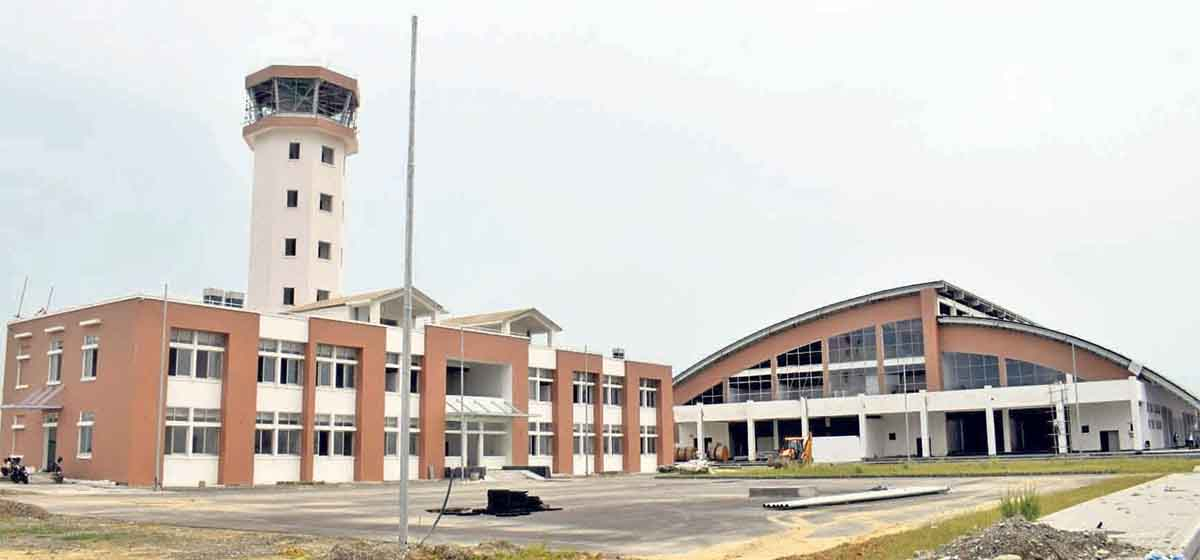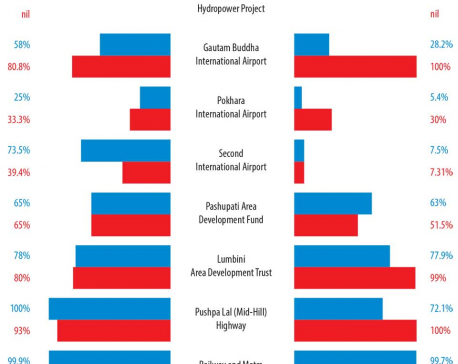
OR
Editorial
Making Gautam Buddha In'tl Airport Commercially Viable
Published On: December 30, 2022 08:05 AM NPT By: Republica | @RepublicaNepal

There were high hopes that the operation of the Gautam Buddha International Airport (GBIA) in Lumbini would serve as an alternative to Tribhuvan International Airport (TIA), which has already proven to be too small to handle the country’s growing air traffic. But the disturbing news that has come in less than eight months of its operation suggests that the much-hyped GBIA is likely to go out of business. A few airline companies that are operating flights to and from the country’s second international airport plan to suspend flights citing a low turnout of passengers. In the latest development, Himalaya Airlines on Wednesday announced to suspend its chartered flight from the GBIA within just a month and half after starting its flights there. The company started its chartered flight to Malaysia from the international airport on November 3 after the Civil Aviation Authority of Nepal (CAAN) imposed a compulsory provision that the airline companies operating three international flights from the TIA in Kathmandu a day should run the service from the GBIA. Prior to this, Jazeera Airways, which was supposed to start daily flights, instead reduced the number of flights from the airport in less than a month after starting its services in September. Although the state-owned Nepal Airlines Corporation (NAC) plans to conduct its flight to Malaysia and Qatar from the GBIA, the situation with only other two private sector companies operating flights to and from GBIA has raised the question over the long-term sustainability in business of the national flag carrier. This is not a good development.
Nepal spent a total of $76.1 million to build this airport, which has a potential to serve as a gateway to the western Nepal. Of the total amount, the Asian Development Bank (ADB) has invested around US $37 million in loans and grants, while the OPEC Fund for International Development has contributed about $11 million in loans. The remaining amount was funded by the Government of Nepal. The decision on the part of airline companies to suspend flights to and from GBIA has put such a large investment in peril. As airlines that have decided to suspend or cut down flights to and from GBIA have cited low numbers of passengers, it is high time the government agencies concerned worked to address the issues that make passengers unwilling to fly in and out of the GBIA. One of the main reasons behind this seems to be the centralization of all services related to migrant workers in Kathmandu. Although migrant workers can receive labor permits online, they are still forced to go to Kathmandu as most of the manpower agencies that send them abroad are based in Kathmandu. The health centers that provide health check-up services are also mostly based in Kathmandu. The government has made it mandatory for workers flying abroad to receive orientation, which migrant workers complain are available only in Kathmandu. Above all, passengers who need to renew passports also are forced to come to Kathmandu unless they have a longer holiday.
Apart from addressing the issues that have currently forced migrant workers to come to Kathmandu, the government needs to launch an aggressive marketing campaign to attract more passengers to travel to and from GBIA. Among other things, there is a huge potential to bring in Buddhist pilgrims to Nepal as the airport is located in the birthplace of Lord Buddha. There are also a number of tourist destinations which are closer to the GBIA such as Chitwan National Park and Bardiya National Park. Analysts say high operating costs and the reluctance of the Indian government to open air routes via the Indian land in the proximity of the GBIA are also among the reasons behind the lack of interest of the airlines companies to operate flights from GBIA. The government needs to work on these fronts as well. Above all, the government also needs to provide additional incentives to attract airlines companies to operate flights from the newly-established airport. As discussions are still underway to build yet another international airport after the Pokhara Regional International Airport that is scheduled to start regular flights from January 1, 2023, the experience of GBIA serves an important lesson to our planners and policy makers: Make a proper homework, planning and strategy to make the airport commercially viable.
You May Like This

Huge investment in Gautam Buddha International Airport in peril as airline companies struggle to sustain business
KATHMANDU, Dec 29: The much hyped Gautam Buddha International Airport (GBIA) seems likely to go out of business as the... Read More...

AEROTHAI to conduct calibration flight at Gautam Buddha Airport
KATHMANDU, Nov 8: The Aeronautical Radio of Thailand Ltd (AEROTHAI) has been granted permission to conduct the calibration flight at... Read More...

NPC tables impressive progress report of national pride projects
KATHMANDU, Sept 12: There has been significant progress in the national pride projects in the last fiscal year, according to a... Read More...




Just In
- Sunkoshi-Marin Diversion Project’s tunnel construction nears completion, breakthrough scheduled for May 8
- Govt tightens security arrangement for Third Investment Summit 2024
- Pesticide residue found in vegetables in Nepalgunj
- Aam Janata Party and Samajwadi Jana Ekata Party merge
- 1,600 participants confirmed for Nepal Investment Summit
- Ilam-2 by-elections held peacefully, vote count likely to start tonight
- NEA schedules five-day power cut across Kathmandu Valley for underground cable installation
- Hundreds of passengers including foreign tourists in distress as poor visibility halts flights to and from PRIA








-1200x560-wm_20240427144118.jpg)




Leave A Comment